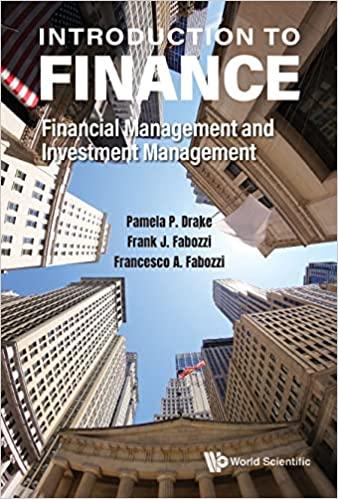Question
Part a: Welton Ltd assembles then sells specialised toy sailing boats aimed at children between the ages of five and nine. The results for the
Part a:
Welton Ltd assembles then sells specialised toy sailing boats aimed at children between the ages of five and nine. The results for the company for July are shown below:

All production is sold; the company keeps very low levels of inventory. During the first week of July there was a flood in the assembly plant that took a week out of production. Luckily, the manufacturing labour is sub-contract agency labour and the agency was able to place the assembly operatives elsewhere for that week.
The variances are the responsibility of a number of managers as follows:
Sales variances: Sales manager
Manufacturing cost variances: Production manager
All other cost variances: General office manager
Managers receive bonuses if the variances are either zero or favourable (F). Where there are adverse variances (A), the manager is likely to be invited to a performance review with the relevant director for that area. The sales manager feels that the current reporting system is unfair.
The sales manager has asked you, the management accountant, to redraft the performance statement into something that is more useful, motivational and fair. You have heard about flexible budgeting and have agreed to draft some preliminary statements.
You have also discovered the following additional information in relation to the variable costs:

Required:
Prepare a budget that is flexed to the actual level of output for July, using the original data and additional information that you have discovered. Analyse the variances in as much detail as the data allows. Interpret the results of your performance statement, explaining why the original budgeted profit was not met. You should comment on all significant variances, and indicate where further information is required.
Part b:
The companys budget for the year ended 31 December had been: Sales: 600,000 units @ 14.00
Material: each unit requires 2 kilos @ 1 per kilo.
Labour: each unit requires 1 hour of labour time at a cost of 4.00 per hour.
Variable expenses: estimated at 20p per labour hour
Fixed expenses (not absorbed into inventories): estimated at 1,800,000.
The actual profit statement for the year ended 31 December is as follows:
Sales 500,000 units @ 15.00 7,500,000
Direct materials 1,440,000
Direct labour 2,250,000
Variable overheads 110,000
Fixed overheads 1,900,000
Total costs 5,700,000
Profit 1,800,000
You are also given further information about what happened during the year: Material: actually used 1,200,000 kilo @ 1.20 per kilo.
Labour: 450,000 labour hours were worked at a rate of 5 per hour.
Production and sales were equal. There are no inventories of any kind.
Required:
Prepare the original and flexed budgets. Analyse the variances in as much detail as the data allows. Interpret the results.
\begin{tabular}{lccc} & Actual & Original budget & Variance \\ Units & 7,000 & 9,000 & 2,000 \\ \hline & & & \\ Sales & 217,000 & 279,000 & 62,000A \\ Variable costs & & & \\ Manufacturing & 150,400 & 184,635 & 34,235F \\ Shipping & 5,000 & 5,600 & 400F \\ Administrative & 2,000 & 1,800 & 200A \\ \hline Total variable cost & 157,400 & 191,835 & 34,435F \\ \hline Fixed costs & & & \\ Manufacturing & 37,300 & 37,000 & 300A \\ Administrative & 33,000 & 33,000 & \\ Total fixed costs & 70,300 & 70,000 & 300A \\ Operating profit/(loss) & (10,700) & 17,165 & 27,865A \\ \hline \hline \end{tabular} \begin{tabular}{lccc} & Actual & Original budget & Variance \\ Units & 7,000 & 9,000 & 2,000 \\ \hline & & & \\ Sales & 217,000 & 279,000 & 62,000A \\ Variable costs & & & \\ Manufacturing & 150,400 & 184,635 & 34,235F \\ Shipping & 5,000 & 5,600 & 400F \\ Administrative & 2,000 & 1,800 & 200A \\ \hline Total variable cost & 157,400 & 191,835 & 34,435F \\ \hline Fixed costs & & & \\ Manufacturing & 37,300 & 37,000 & 300A \\ Administrative & 33,000 & 33,000 & \\ Total fixed costs & 70,300 & 70,000 & 300A \\ Operating profit/(loss) & (10,700) & 17,165 & 27,865A \\ \hline \hline \end{tabular}Step by Step Solution
There are 3 Steps involved in it
Step: 1

Get Instant Access to Expert-Tailored Solutions
See step-by-step solutions with expert insights and AI powered tools for academic success
Step: 2

Step: 3

Ace Your Homework with AI
Get the answers you need in no time with our AI-driven, step-by-step assistance
Get Started


